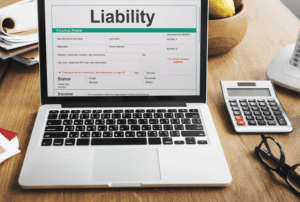
Another example is in the software industry, where contra expense accounts may be applied to offset development costs that are later reimbursed by clients as part of service contracts. This allows the company to accurately report the net expense incurred in the development process. By using contra expense accounts, financial statement users can gain a more accurate and detailed understanding of the company’s expense structure, allowing for better financial analysis and decision-making. Explore the purpose and types of contra accounts in financial statements, enhancing clarity and accuracy in financial reporting.
How Can a Company Manage Its Contra Expenses?
Recording a contra expense account involves specific entry methods that ensure accurate offsetting of expenses, often linked with contra revenue accounts for comprehensive contra expense financial balancing. Discount on Bonds Payable is a contra liability account with a debit balance that reduces the normal credit balance of its parent Bonds Payable liability account in order to present the net value of payables on a company’s balance sheet. The use of contra expense accounts also aids in identifying trends and anomalies in expense patterns. For instance, a sudden increase in purchase returns recorded in a contra expense account might signal issues with supplier quality or internal procurement processes. Conversely, consistent discounts received could indicate strong supplier relationships and effective negotiation tactics.
- These accounts ensure transparency and precision in financial reporting, offering insights into adjustments made to various account types.
- There is the existence of contra accounts in accounting which are accounts that have the purpose of decreasing the value of another specific account if the two accounts are netted or summed together.
- By accounting for discounts and other adjustments, GadgetHub can track its actual expenses more effectively and make more informed decisions about its inventory purchases and supplier relationships.
- This means that entries recorded on the left side of the T-account will increase the asset balance and entries recorded on the right side will decrease it.
- Sales returns and allowances adjust gross sales to reflect net sales, which is essential for businesses with significant returns or discounts.
Journal Entry Example
- They are also useful for businesses that need to track transactions between multiple accounts.
- As a seasoned financial professional with over 20 years of experience, I specialize in strategic financial leadership and guidance for growing businesses.
- He has been the CFO or controller of both small and medium sized companies and has run small businesses of his own.
- This transparency is crucial for maintaining the trust of investors, creditors, and other stakeholders, as it demonstrates a commitment to accurate and honest financial reporting.
- A contra expense account is an account used to reduce the amount of an expense without changing the balance in the main expense account.
By recognizing contra expenses, financial statements can present a more transparent and accurate view of the company’s financial health. A contra liability is a general ledger account with a debit balance that reduces the normal credit balance of a standard liability account to present the net value on a balance sheet. Examples of contra liabilities are Discounts on Bonds and Notes Payable and Short-Term Portion of Long-Term Debt. The benefit of using the contra expense account is that the company’s managers can see in account 4210 the total amount that the company paid to the health insurance company. Then in account 4211 they can see the portion of the cost that was paid by the employees.

What Is the Difference Between a Contra Expense and a Contra Revenue?

For the past 52 years, Harold Averkamp (CPA, MBA) hasworked as an accounting supervisor, manager, consultant, university instructor, and innovator in teaching accounting online. For the past 52 years, Harold Averkamp (CPA, MBA) has worked as an accounting supervisor, manager, consultant, university instructor, and innovator in teaching accounting online. The purpose of the Allowance for Doubtful Accounts is to track the reduction in the value of the asset while Car Dealership Accounting preserving the historical value of the asset. CCC bought equipment and machinery worth $100,000 at the beginning of the current financial year and estimates that the equipment and machinery will depreciate by $10,000 every year.
These accounts are essential for providing a more accurate picture of an organization’s financial health by offsetting specific costs. In essence, contra-expense accounts are instrumental in ensuring the integrity of your financial statements and facilitating compliance with accounting standards. They provide a valuable tool for maintaining precise financial records, which is essential for informed decision-making and regulatory compliance. It carries a credit balance and is linked to the fixed asset account, which carries a debit balance. The accumulated depreciation account is designed to reduce the carrying contra asset account value of the fixed asset account when depreciation is recorded at the end of each period.

- For example, a company pays for medical insurance on behalf of its employees, which it records in an employee benefits expense account.
- In revenue reporting, contra accounts like sales returns and allowances adjust gross sales to present net sales, ensuring revenue figures are not overstated.
- Their expertise can help businesses implement best practices and make informed decisions to improve their financial health and sustainability.
- By using contra expense accounts, financial statement users can gain a more accurate and detailed understanding of the company’s expense structure, allowing for better financial analysis and decision-making.
- Implementing cost control measures involves assessing contra assets and contra liabilities to manage expenses effectively and ensure financial stability.
Analyzing and adjusting contra expenses requires a thorough examination of contra revenue and contra expense accounts to ensure financial accuracy and alignment with business goals. Contra asset accounts adjust asset values on the balance sheet to reflect their true economic value. A key example is accumulated depreciation, which offsets the cost of tangible fixed assets like machinery or buildings. Depreciation is calculated using methods such as straight-line or declining balance to allocate an asset’s cost over its useful life. For instance, if a company purchases equipment for $100,000 with a useful life of 10 years, straight-line depreciation results in an annual expense of $10,000. The accumulated depreciation account increases yearly, reducing the asset’s book value.
Leave a Reply